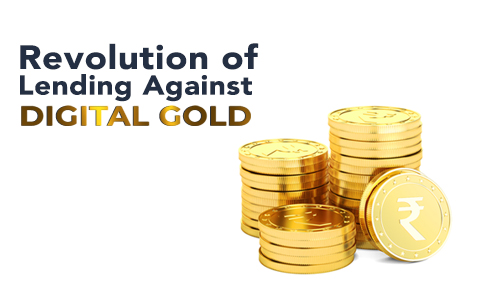The Yellow Metal; Gold has been a part of our society for a very long time. For Indians, gold is considered much more than a hedge. While it is a legacy in many parts of India, it is an investment to mitigate financial risks during inflation, economic, social and geographical crisis. Citing this sentiment and furore for gold, financial institutions introduced the concept of ‘organized lending against gold’, a concept otherwise widely practiced in the unorganized sector.
NBFCs like Muthoot and Manappuram, who control about 90% of the gold loan market, extend loans against physical gold. Due to an emotional attachment to the gold, individuals seldom choose to sell their gold in times of need, rather they choose to pawn it. And hence, NBFCs view lending against gold as a lucrative option since defaults against gold loans are comparatively lower.
During the pandemic, lenders witnessed a significant surge in the demand for loans against gold as borrowers faced an immediate and temporary cash crunch. In most scenarios of an immediate financial crunch, the foremost step one takes is either liquidating or taking a loan against their valuable assets to keep the cash flow in motion.
Today, with technology joining the equation, we are introduced to ‘GoldTech’. Where gold has been steeply priced in the market, the pandemic paved the way to an innovative form of lending against gold- Lending against Digital Gold.
Financial institutions partner with third-party platforms that enable individuals to purchase gold digitally. The said gold can be converted into physical gold at any point if required. If not, it can be treated as an investment with the bank. For instance, DBS Bank India has partnered with SafeGold, a third party, to offer its customers a platform where they can buy and sell digital gold.
This technology has now furthered where consumers will be able to take a line of credit or a cash route, depending on the lending partner and will be able to borrow against digital gold. While individuals will have the ease of availing a loan within a few minutes, financial institutions will have the security.
With gold following historic trends rather than market sentiments, lending against digital gold is as lucrative as physical gold. Moreover, with about 65% of gold financing in India taking place in the unorganized sector, a paradigm shift can be expected from the unorganized to the organized sector. However, the regulatory and operational landscape for digital gold lending has been quite a challenge for institutions.
Indiagold, a lending startup, appears to be India’s first platform to offer loans against digital gold with a capping of Rs 60,000. Leading players like Paytm, Google Pay, PhonePe in the digital gold-selling space in India may partner with such service providers to diversify their portfolio while furthering the recognition of loans against digital gold.
India’s changing landscape in the financial arena has presented several prospects to innovate and introduce newer services. A loan against digital gold is an evolution and can prove as a modifier in the gold credit system.
